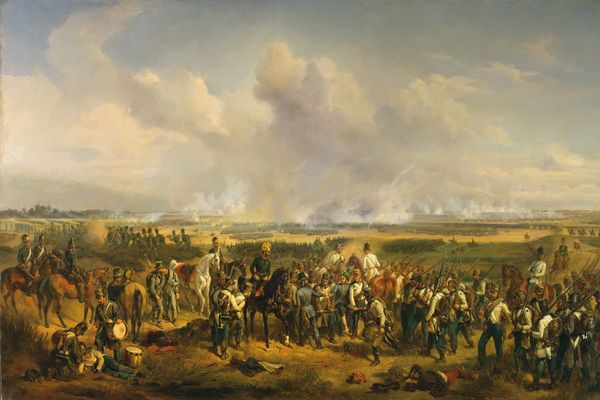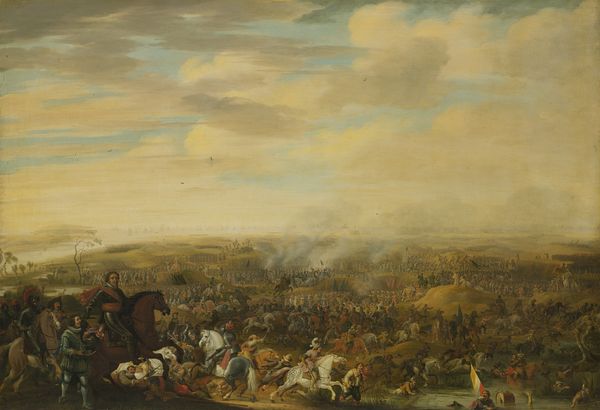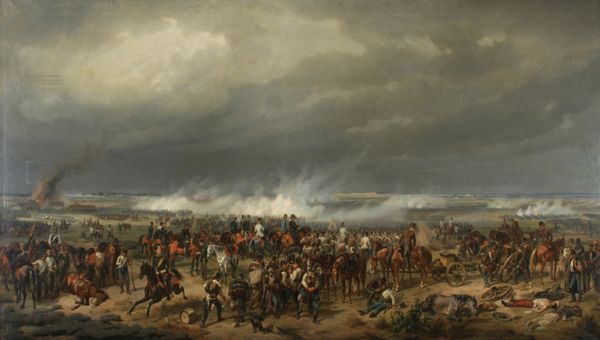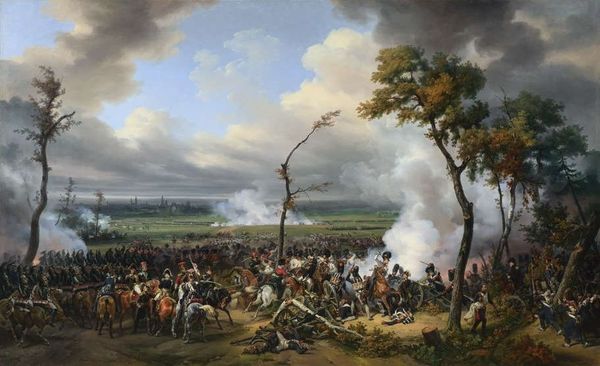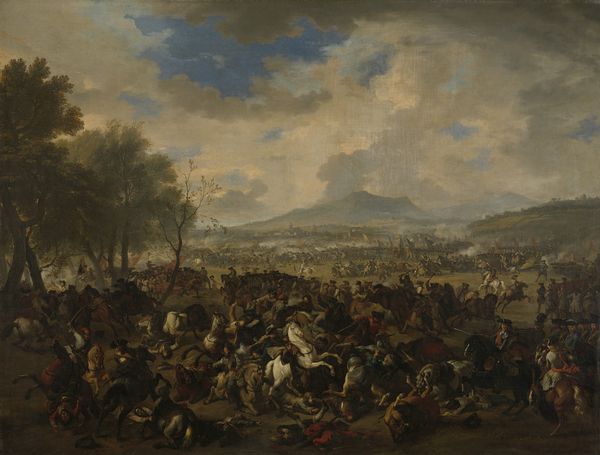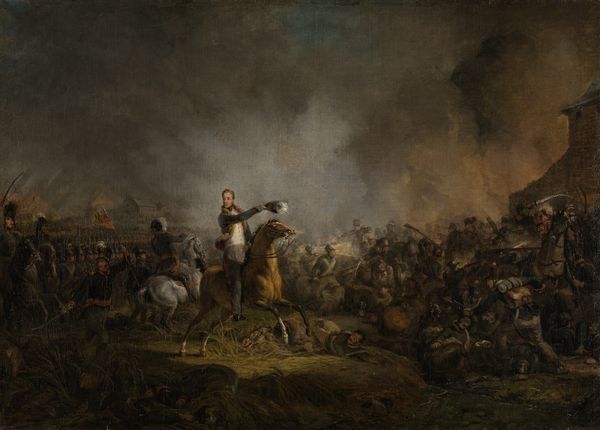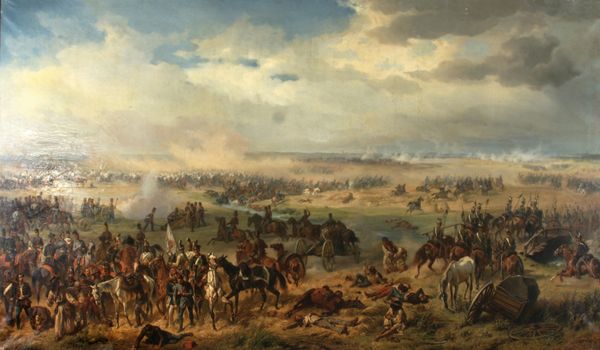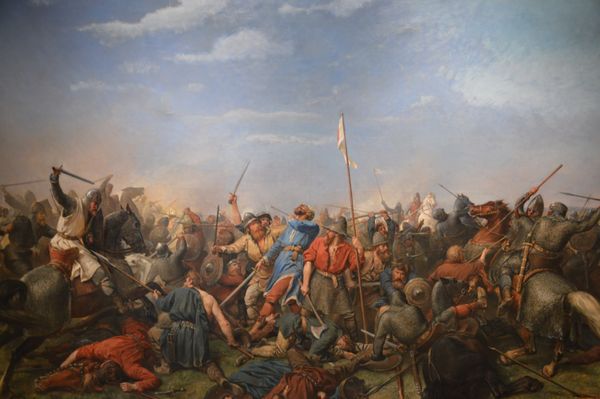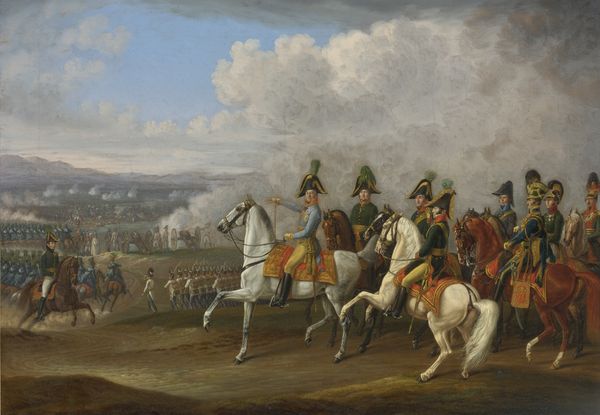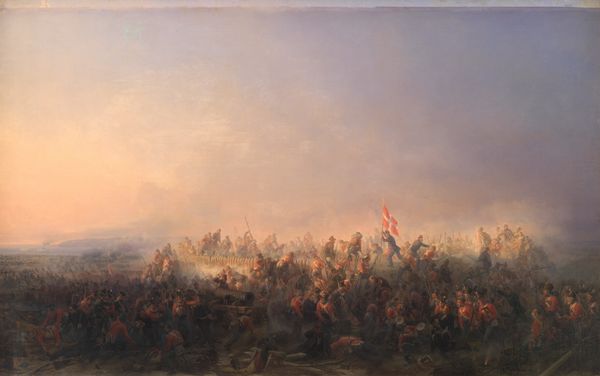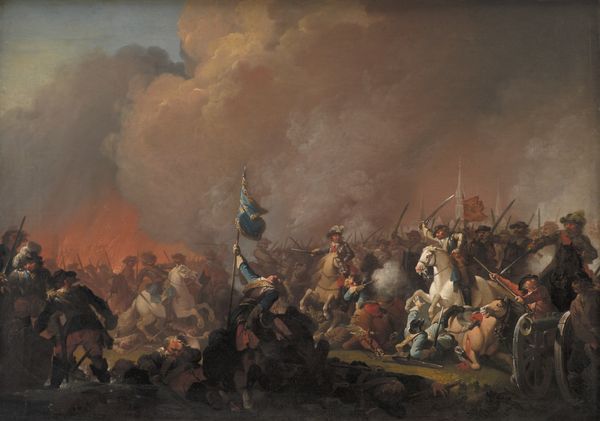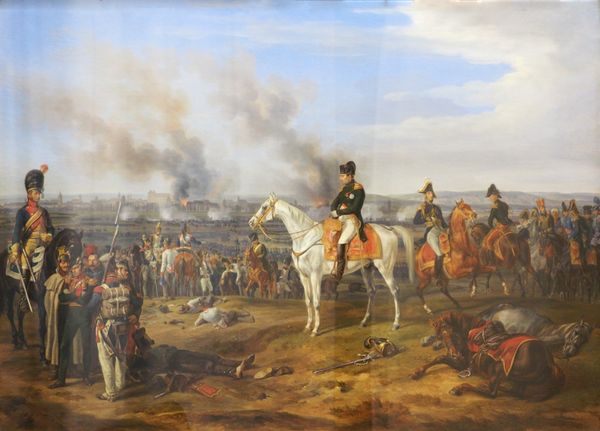
painting, oil-paint
#
narrative-art
#
painting
#
oil-paint
#
landscape
#
figuration
#
oil painting
#
romanticism
#
history-painting
Copyright: Public domain
Editor: So, here we have Albrecht Adam's "Battle of Borodino 1812," painted in 1815 using oil on canvas. It depicts… well, a chaotic battle scene! It feels overwhelming, almost like a visual representation of the senselessness of war. What do you see in this piece, especially considering its historical context? Curator: That feeling of chaos is key, isn't it? But let's dig deeper. How does Adam depict power structures, or lack thereof, in this moment of intense conflict? Does it romanticize war or does it expose the brutal reality, perhaps unintentionally highlighting the disparities in who benefits from such conflicts? Editor: I hadn’t thought of it that way. It seems romanticized in its scope and drama. I guess I’m not seeing the power analysis… Curator: Look closely. Consider the soldiers—are they depicted as heroic individuals or faceless masses? And who commissioned this painting, and what might their motivations have been? How might it speak to early 19th century nationalism and the social hierarchies embedded within military structures? Editor: That makes me see it differently. Commissioned work during times of conflict can become part of the power dynamic. It may very well speak of early 19th century nationalism. I now see the way it perhaps celebrates national pride while downplaying individual suffering. Curator: Exactly! This painting, therefore, can become a starting point to deconstruct narratives of power and think about how history painting operates as a tool for shaping collective memory and legitimizing specific socio-political orders. Editor: That’s fascinating. I appreciate the way you frame it. It encourages me to question not just *what* is depicted but *why* and *for whom.* Curator: And always to consider whose voices and experiences are missing from these grand narratives. This analysis empowers us to approach art with a more critical and informed eye.
Comments
No comments
Be the first to comment and join the conversation on the ultimate creative platform.
